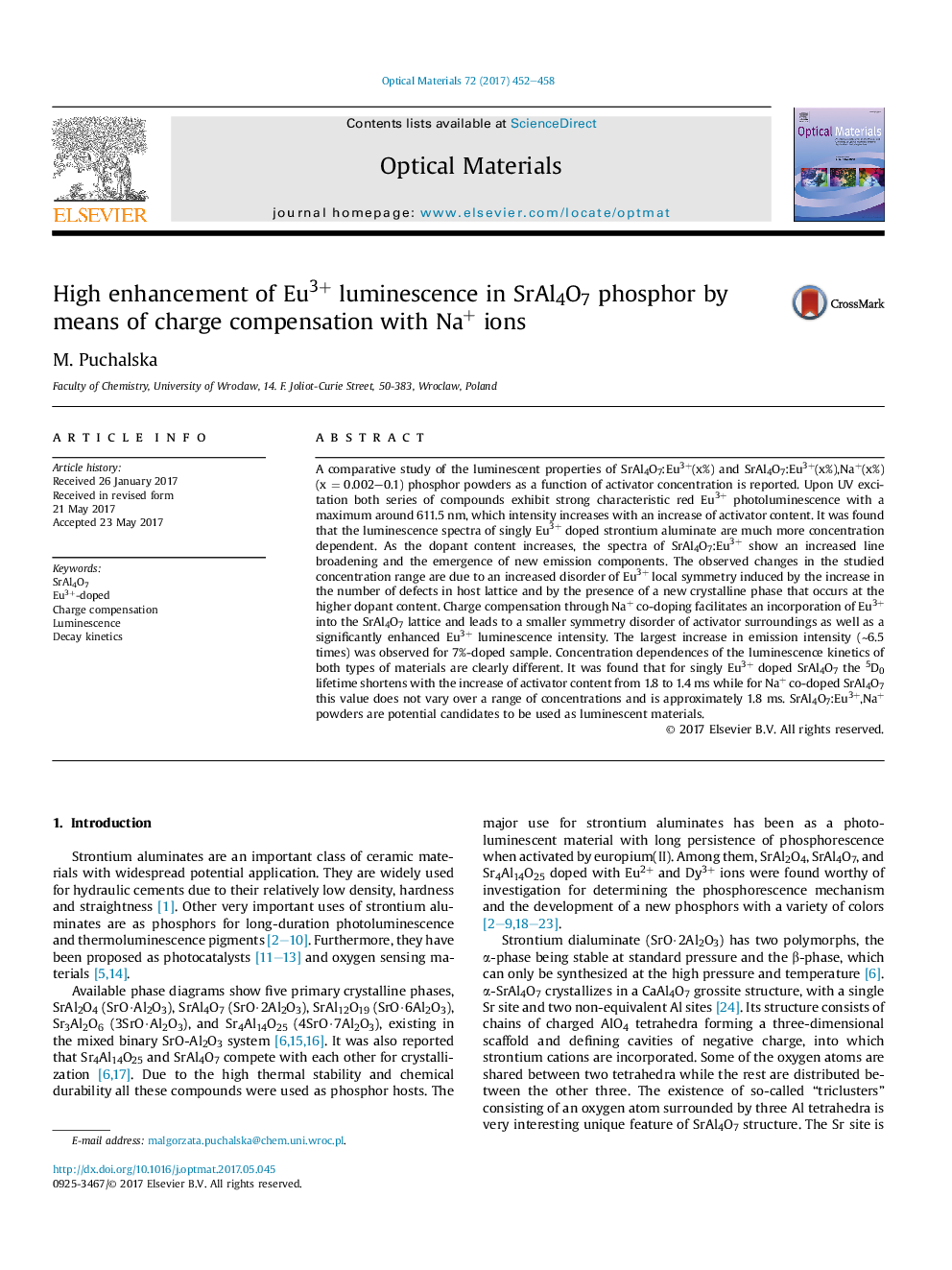| Article ID | Journal | Published Year | Pages | File Type |
|---|---|---|---|---|
| 5442494 | Optical Materials | 2017 | 7 Pages |
Abstract
A comparative study of the luminescent properties of SrAl4O7:Eu3+(x%) and SrAl4O7:Eu3+(x%),Na+(x%) (x = 0.002-0.1) phosphor powders as a function of activator concentration is reported. Upon UV excitation both series of compounds exhibit strong characteristic red Eu3+ photoluminescence with a maximum around 611.5 nm, which intensity increases with an increase of activator content. It was found that the luminescence spectra of singly Eu3+ doped strontium aluminate are much more concentration dependent. As the dopant content increases, the spectra of SrAl4O7:Eu3+ show an increased line broadening and the emergence of new emission components. The observed changes in the studied concentration range are due to an increased disorder of Eu3+ local symmetry induced by the increase in the number of defects in host lattice and by the presence of a new crystalline phase that occurs at the higher dopant content. Charge compensation through Na+ co-doping facilitates an incorporation of Eu3+ into the SrAl4O7 lattice and leads to a smaller symmetry disorder of activator surroundings as well as a significantly enhanced Eu3+ luminescence intensity. The largest increase in emission intensity (â¼6.5 times) was observed for 7%-doped sample. Concentration dependences of the luminescence kinetics of both types of materials are clearly different. It was found that for singly Eu3+ doped SrAl4O7 the 5D0 lifetime shortens with the increase of activator content from 1.8 to 1.4 ms while for Na+ co-doped SrAl4O7 this value does not vary over a range of concentrations and is approximately 1.8 ms. SrAl4O7:Eu3+,Na+ powders are potential candidates to be used as luminescent materials.
Related Topics
Physical Sciences and Engineering
Materials Science
Ceramics and Composites
Authors
M. Puchalska,
